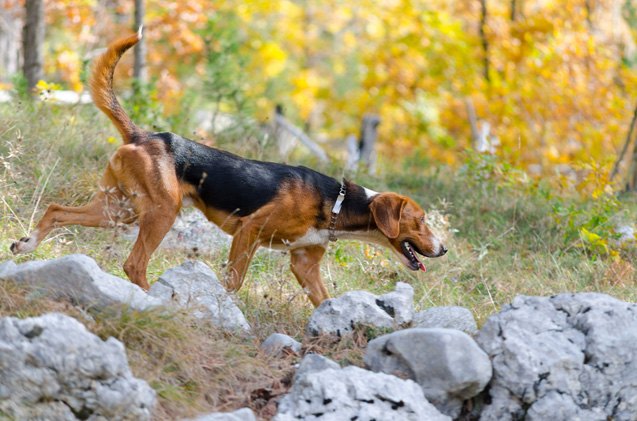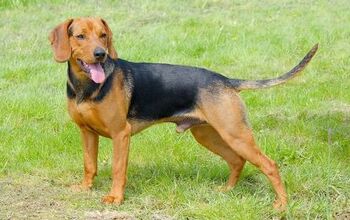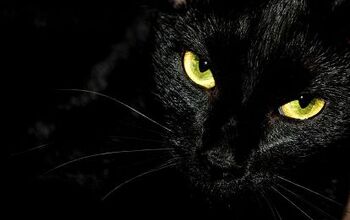Serbian Tricolour Hound


About Serbian Tricolour Hound
Formerly known as the Yugoslavian Tricolour Hound, this breed looks like your typical hound with its black, brown, and white coloration. A medium-sized scent hound, the Serbian Tricolour Hound was bred as a running hound, typically used on feral pigs and other large game. A loving and loyal breed, these dogs are popular for hunting and in the home.
A medium-sized scent hound, the Serbian Tricolour Hound was bred as a running hound.
First shown in Yugoslavia in 1950, the Serbian Tricolour Hound was originally known as the Yugoslavian Tricolour Hound. He is one of many breeds of scenthound that have existed in the Balkans for decades and, for many years, was regarded as simply another Serbian scent hound. In 1946, however, proponents of the breed fought to separate the breed from other Serbian hounds and it was granted independent status and recognized by the FCI in 1961. The name was changed to the Serbian Tricolour Hound in 1991 after the breakup of SFR Yugoslavia and the breed is still popular in Serbia today.
The Serbian Tricolour Hound is one of many Serbian hounds that have existed in the area for many years. Its exact origins are unknown.
As a medium-sized breed, the Serbian Tricolour Hound doesn’t require a size-specific dog food formula. You should consider, however, the fact that he is an energetic working breed that requires a great deal of daily exercise. This being the case, and active or working breed formula may be a better choice to ensure that this breed’s high needs for energy are being met. Choose a formula that is rich in protein with higher levels of fat than standard dog food to provide that extra energy.
The Serbian Tricolour Hound is an intelligent dog that usually responds well to training.
The Serbian Tricolour Hound is an intelligent dog that usually responds well to training. Keep in mind, however, that they are bred for a certain degree of independence, so they can become willful with inexperienced dog owners. This breed does best with positive reinforcement training and both patience and persistence are of the utmost importance. These dogs can become bored rather quickly with repetitive tasks, so keep your training sessions short and fun to keep your dog engaged. Socialization is also very important, especially if you plan to keep your dog around children and other pets.
The Serbian Tricolour Hound is a medium-sized hound with males standing 18 to 22 inches tall and females being a little smaller, between 17.5 and 21.5 inches tall. The weight range for the breed is 44 to 55 pounds, on average.
Though originally bred for hunting, the Serbian Tricolour Hound also makes a wonderful family pet. These dogs are incredibly loyal and devoted to family and, as long as they are properly socialized, they generally get along well with children. This breed is friendly with strangers and he does get along well with other dogs. Use caution, however, when keeping him around cats and other small pets due to his strong hunting instincts. These dogs are energetic and active, though not typically hyperactive as long as his exercise needs are met – he does well as a biking or jogging companion. He also requires plenty of mental stimulation to prevent boredom which can lead to undesirable behaviors.
With an average lifespan up to 15 years, the Serbian Tricolour Hound is a healthy breed. Like all dogs, however, he is prone to certain health problems which may include hip dysplasia, ear infections, and field injuries.
The average lifespan for the Serbian Tricolour Hound is 12 to 15 years.
As a hound type, the Serbian Tricolour Hound is a highly active and energetic breed. These dogs require a great deal of daily exercise including at least a 1-hour walk with additional outdoor time to run and play. This breed has excellent stamina so he does well as a biking or jogging companion.
Though originally bred for hunting, the Serbian Tricolour Hound also makes a wonderful family pet.
While the Serbian Tricolour Hound is not currently recognized by the AKC, he was recognized by the FCI in 1961 and became a member of the United Kennel Club in 2006.
Like most hounds, the Serbian Tricolour Hound has a short, gleaming coat that comes in various combinations of deep red, black, and white. The undercoat is thick and well-developed with a short, abundant top coat that is slightly longer over the back of the thighs and under the tail. Most dogs have the typical saddle or black mantle pattern on their back and many have a white blaze on the forehead which often stretches down the muzzle and around the neck. Though his coat is fairly dense, grooming is easy because the coat is also very short.
The average litter size for the Serbian Tricolour Hound is 3 to 6 puppies. If you plan to use your dog for hunting, he should be started as early as possible with training and socialization. This is a medium-sized breed, so puppies don’t require a size-specific formula – standard puppy food will be enough to support healthy growth and development.
Photo credit: Slaven/Shutterstock; M_86/Shutterstock; Kenan_topa/Shutterstock

Kate Barrington is the loving owner of two cats (Bagel and Munchkin) and a noisy herd of guinea pigs. Having grown up with golden retrievers, Kate has a great deal of experience with dogs but labels herself a lover of all pets. Having received a Bachelor's degree in English, Kate has combined her love for pets and her passion for writing to create her own freelance writing business, specializing in the pet niche.
More by Kate Barrington

























